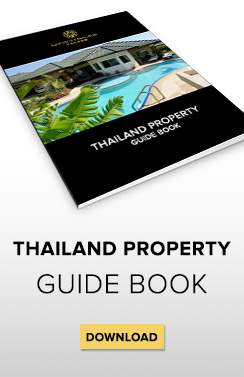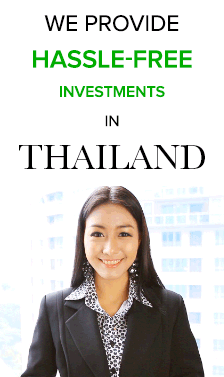Modern trains to start service next month
The State Railway of Thailand on Thursday unveiled 39 modern train carriages with seat-mounted screens and aircraft-type toilets which will go into service on the Bangkok-Chiang Mai route next month.
The state enterprise showed off the new trains at its Siracha Junction in Chon Buri province. It has ordered 115 trains from China Railway Rolling Stock Corporation and China CNR Corporation.
Deputy Transport Minister Ormsin Chivapruck said it was a turning point for the SRT as it seeks to modernise its train services for passenger convenience.
SRT governor Wuthichart Kalyanamitra said the 39 new carriages have been given a thorough check. He said deliver of all 115 cars would be concluded by September.
They will operate on two daily express train trips on four Bangkok routes — to Chiang Mai, Hat Yai, Nong Khai and Ubon Ratchathani — by September next year, he said.
Nine of the 115 carriages will be first-class sleeper cars, with 12 carriages having 24 seats each. Each first-class seat is equipped with a TV screen with movies and music content and a USB slot for battery recharging. Passengers can also order food and beverages via a communications system right at their seats.
Eighty-eight carriages will provide second-class sleeper services that include big screens. Others include dining cars and carriages with facilities to serve people with disabilities and the elderly including wheelchair elevators.
The new units also have wheelchairs, vacuum toilets, surveillance cameras, opened door alarms, and sealed space between carriages for passenger safety. Fares will be the same on the new trains.
Source: Bangkok Post
Thailand rethinks its value strategy for 2017
THAILAND wants to change its tourism marketing position from a value-for-money destination to a value-for-experience destination as the country seeks to become a quality leisure destination, announced Tourism Authority of Thailand (TAT) governor Yuthasak Supasorn at a market briefing yesterday to unveil its marketing directions in 2017.
The new strategic policy is designed to bring tourism, now recognised by the country’s leaders and policymakers as of one of Thailand’s most successful economic pillars, in line with the 20-year reform programme Thailand 4.0 that is being charted by the government under prime minister Prayut Chan-o-cha.
“We will still promote Thainess but through deeper, more nuanced ways, using unique local experience as a selling point,” said Yuthasak. Such experiences are not just restricted to community-based or rural experiences but will draw on the strengths or identity of a destination, he elaborated.
Even big cities like Bangkok have unique local experiences to offer, the governor added, citing the Wat Traimit enclave in the capital’s Yaowarat district as a hidden repository of Chinese culture and lifestyle.
Both Yuthasak as well as minister of tourism and sports Kobkarn Wattanavrangkul, who was also present at the media briefing, acknowledge that it will no longer be a numbers game for Thailand under the new strategic policy. Instead, emphasis will be given to driving traveller expenditure through longer length of stay of visitors and better quality of traveller experience.
In 2017, TAT aims to raise revenue earnings from domestic and international visitors by 10 per cent to 950 billion baht (US$27 billion) and 1.9 trillion baht respectively.
As well, Yuthasak wants to encourage Thais across all sectors of the society to travel more extensively in the country to drive domestic tourism.
“This will enable Thais to see the value of tourism and foster a stronger sense of belonging, thus leading to stronger foundation for the development of unique local experiences,” he said.
“We want to ensure that Thailand is seen as a preferred destination in the minds of international visitors. At the same time, visitor arrivals will have to be managed by greater focus on sustainability and management of the natural resources.”
TAT will also develop a broad range of marketing communications materials aligned with the objectives to give greater prominence to the unique local experiences of Thailand on the world stage. At the same time, the Amazing Thailand slogan will remain in place, supported by Discover Amazing Stories in Amazing Thailand narratives.
Source:TTG ASISA
Thailand’s Economy Expected to Grow 2.5 Percent in 2016
Thailand’s economy is expected to grow by 2.5 percent in 2016, after growing 2.8 percent last year. While the global economy has been weakening and exports have been slowing, strong fundamentals and ample fiscal and monetary buffers will help Thailand weather shocks, according to the 2016 Thailand Economic Monitor released today by the World Bank.
Fiscal stimulus and tourism will remain key drivers of economic growth in Thailand, but the economy still faces headwinds on the path to a broad-based and sustained recovery. The slowdown has exposed structural challenges in implementing public investment, maintaining or raising export competitiveness, and addressing skills mismatches, the report said. The aging of the working-age population will begin to affect the Thai economy within the next five years.
“I am pleased to note that the World Bank has given due credit to the current government in the rapid turnaround of the Thai economy by way of fiscal stimulus measures as well as long-term reforms in infrastructure investment and state enterprises to achieve inclusive and sustainable growth.” said Mr. Kiatchai Sophastienphong, Vice Minister for Finance.
The Thailand Economic Monitor series provides an analytical perspective on key policy challenges facing the country, including Thailand’s aging society.
Thailand is located in a region with bright growth prospects and a relatively young population compared to the rest of the world. East Asia is projected to grow 6.3 percent in 2016. ASEAN, with over 600 million people, is a market with vast human and resource potential. Thailand can leverage on these trade and investment opportunities as it undertakes planned reforms in education, competitiveness and skills to create a prosperous future for today’s youth while ensuring sustainable care for older generations.
Source:worldbank.org
Two Thai cities voted into world’s top 15

Above: Chiang Mai also topped the list of their 10 Best Cities in Asia rankings.
Chiang Mai and Bangkok have been rated by readers of US magazine Travel + Leisure in the top 15 World’s Best Cities for 2016.
Northern city Chiang Mai ranked second with a score of 91.25 and Bangkok sat at 14th, scoring 88.96. Last year Bangkok ranked sixth out of 10 on a list in which Chiang Mai did not feature.
The winner was US city Charleston, South Carolina, with a score of 91.66, up from second last year and taking over from Japan’s Kyoto (89.75), winner in 2014 and 2015.
Newcomer Luang Prabang in Laos sits at fifth (89.85) and Cambodia’s temple town Siem Reap at 13th (88.961), down from third last year.
Other cities on the list include Rome (11th) and Florence (4th), South Africa’s Cape Town (10th), Spain’s Barcelona (8th) and Mexico’s San Miguel de Allende (3rd).

Above: The winner was US city Charleston, South Carolina, with a score of 91.66.
Travel + Leisure online says its “readers ranked cities on their sights and landmarks, culture, cuisine, friendliness, shopping, and overall value”.
The city rankings are part of their annual World’s Best Awards, which also includes islands, spas, airlines, and cruise lines.
Chiang Mai also topped the list of their 10 Best Cities in Asia rankings, followed by Luang Prabang, Kyoto, Siem Reap, Bangkok, Vietnam’s Hoi An, Bali’s Ubud, India’s Udaipur, Tokyo and Tibet’s Lhasa.
The magazine said: “Chiang Mai might not be Thailand’s largest city, but it’s first in our reader’ hearts – probably because it’s much more manageable. It has a busy downtown with restaurants and must-see markets, but quiet resorts are a quick drive away.

Above: The cities of Southeast Asia are on the rise, such as Luang Prabang.
“The cities of Southeast Asia are on the rise. Urban centres in the region, such as Bangkok ; Siem Reap; Cambodia; and Luang Prabang, Laos – hailed for their affordable and delectable dining, historic sites, warm locals, and exciting culture – made up more than half of our list of Best Cities in Asia this year. There’s never been a better time to go to Asia.”
Again, Thailand did not feature among the top 15 islands, but the Philippines took the top two places with Palawan and Boracay, and sixth place with Cebu. The country did not feature on last year’s list.
“The Philippines are having a moment.” The magazine said.
“Palawan first received the coveted No.1 spot in 2013, and it’s little surprise that the island is back at the top. Visitors are greeted with mountains rising out of impossibly turquoise waters, where shipwrecks and reefs make for prime scuba diving and snorkeling,” it added.
Other islands in the top 15 include New Zealand’s Waiheke (4TH), Greece’s Santorini (5th) and Indonesia’s popular Bali at 15th.

Above: Palawan where shipwrecks and reefs make for prime scuba diving and snorkeling.
Source: Bangkok Post
Phuket becomes sister city with Suining, China

Above: Suining City Deputy Mayor Hu Jiazheng (left) shakes hands with Phuket Governor Chamroen Tipayapongtada after the signing of the friendship MoU at Provincial Hall on June 27.
Phuket gained one more “sister city” from China this week after representatives from Suining, in the Chinese province Sichuan, signed a friendship Memorandum of Association (MoU) on June 27.
Chinese delegates led by Suining City Deputy Mayor Hu Jiazheng met with Phuket Governor Chamroen Tipayapongtada and other officials to sign the MoU at Provincial Hall.
Among the Chinese representatives were China International Friendship Association (CIFA) Sichuan President Zhao Ping, CIFA Sichuan Secretary Xiang Qionghua and CIFA Suining President Luo Qinglun.

Above: Suining, the Chinese province Sichuan, signed a friendship Memorandum of Association (MoU) on June 27.
Phuket officials present at the signing were Phuket Provincial Public Relations Chief Buthsaya Jaipiem, Phuket Provincial Passport Office Chief Supachok Yensrong, Tourism Authority of Thailand (TAT) Phuket Deputy Director Uthit Limsakul, Phuket City Mayor Somjai Suwansupana, Prince of Songkla University (PSU) Phuket Campus Deputy Director Prof Puwadon Butrat and Chinese Consulate in Phuket Deputy Consul General Wang Huijuan.
“The MoU we signed today indicates the foreign affairs relations between Phuket and Suining, China, and it confirms our relationship. After we met and discussed the possibility of being sister cities, we decided to go ahead with the idea,” Governor Chamroen said after the meeting.
“We both agreed that being sister cities will benefit us and that we can help each other to move forward to the future together and boost tourism together.

Above: Phuket is already twinned with nine other places worldwide.
“This also will be an opportunity for us to seek knowledge and exchange many aspects of culture, businesses, marketing, education and more to help us improve our human resources,” he said.
Phuket is already twinned with nine other places worldwide: Bali; Nice in France; Port Blair in the Andaman Islands; Las Vegas; the Crimea in Ukraine; Nakhodka in Russia; and Hainan, Yantai and Ningxia in China.

Above: Two countries can help each other to move forward to the future together and boost tourism together.
Source: The Phuket News













